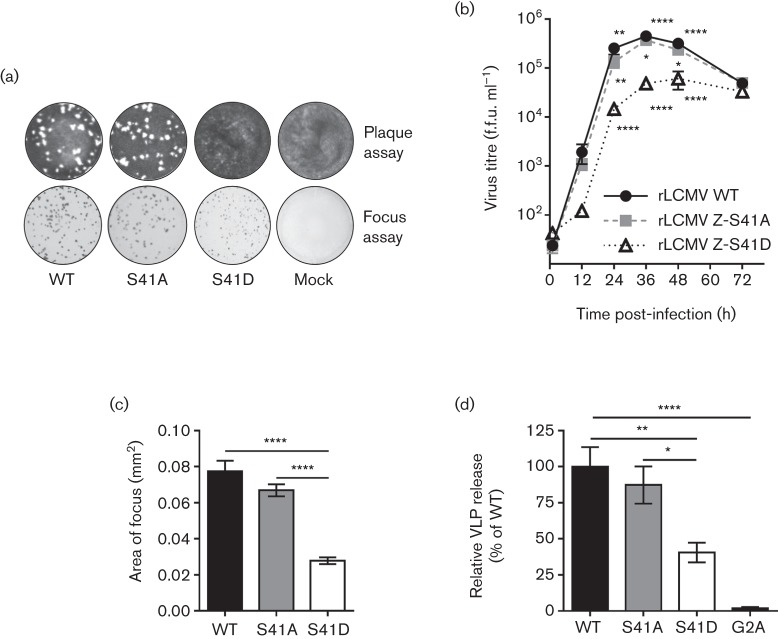Fig. 2.
Phosphomimetic mutation of S41 significantly reduces the efficiency of infectious virus release and the ability of Z to form VLPs. (a) Reverse genetics were used to generate rLCMV containing a non-phosphorylatable S41A mutation or a phosphomimetic S41D mutation. To determine whether infectious virus was recovered, both a standard plaque assay and an immunofocus assay [using an anti-nucleoprotein antibody (1.1.3)] were performed on Vero E6 cells. (b) The kinetics of infectious virus production was examined by growth curve analysis on Vero E6 cells [a multiplicity of infection (MOI) of 0.01 was used for each virus]. Data represent the mean±sem from three independent experiments. For statistical analysis, the data were first log-transformed then a two-way ANOVA with Holm–Sidak’s test for multiple comparisons was performed. (c) The area of foci obtained from the immunofocus assay wells shown in (a) for each rLCMV strain was measured using Image J. Data represent the mean±sem of foci from eight wells for each virus. The Kruskal–Wallis non-parametric test with Dunn’s multiple comparisons test was used to compare mean values. (d) The budding activity of WT or S41-mutant LCMV Z proteins was measured by a VLP release assay. The LCMV Z G2A mutant, which has a budding defect due to its inability to be myristoylated, was included as a control (Perez et al., 2004). The results shown represent the mean±sem from three independent experiments. A one-way ANOVA with the Holm–Sidak’s test for multiple comparisons was used to compare the mean values. For the indicated statistical tests in (b–d): *, P<0.05; **; P<0.01; ****; P<0.0001.

